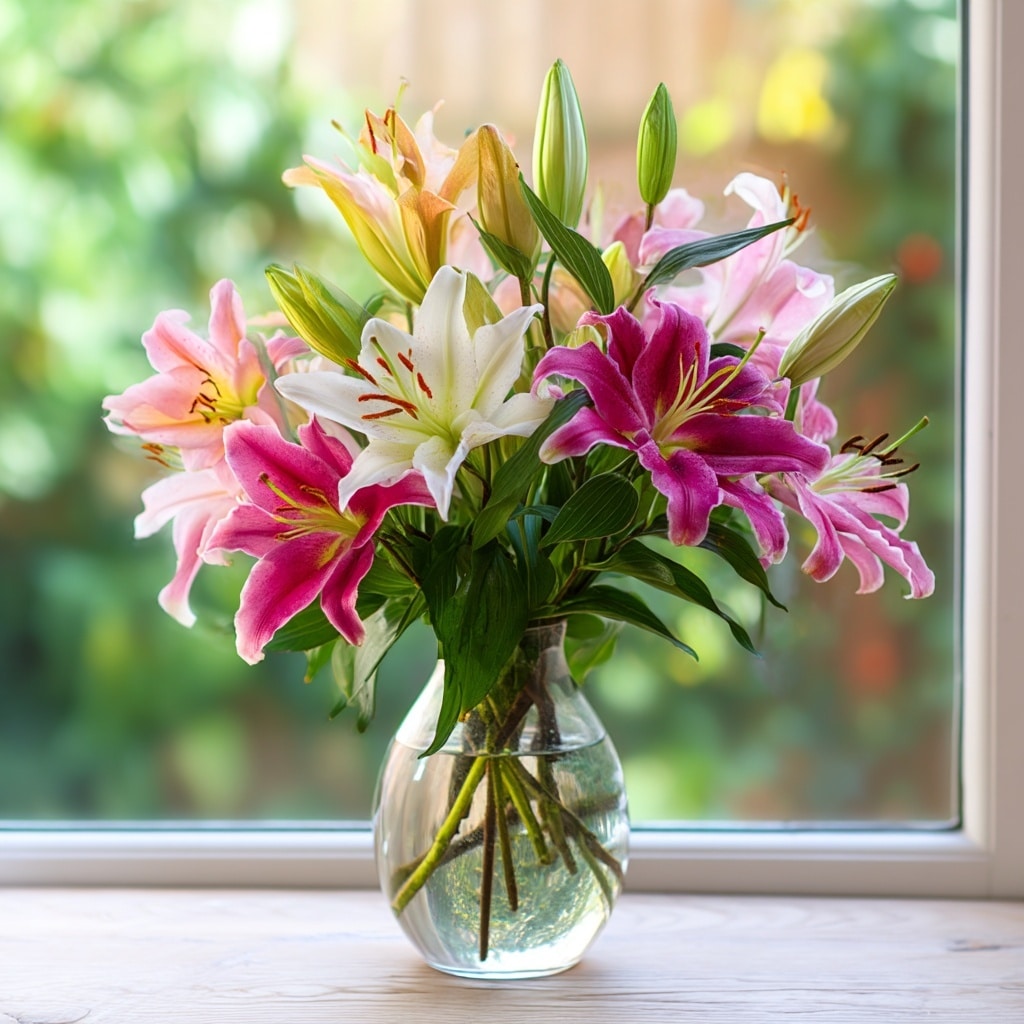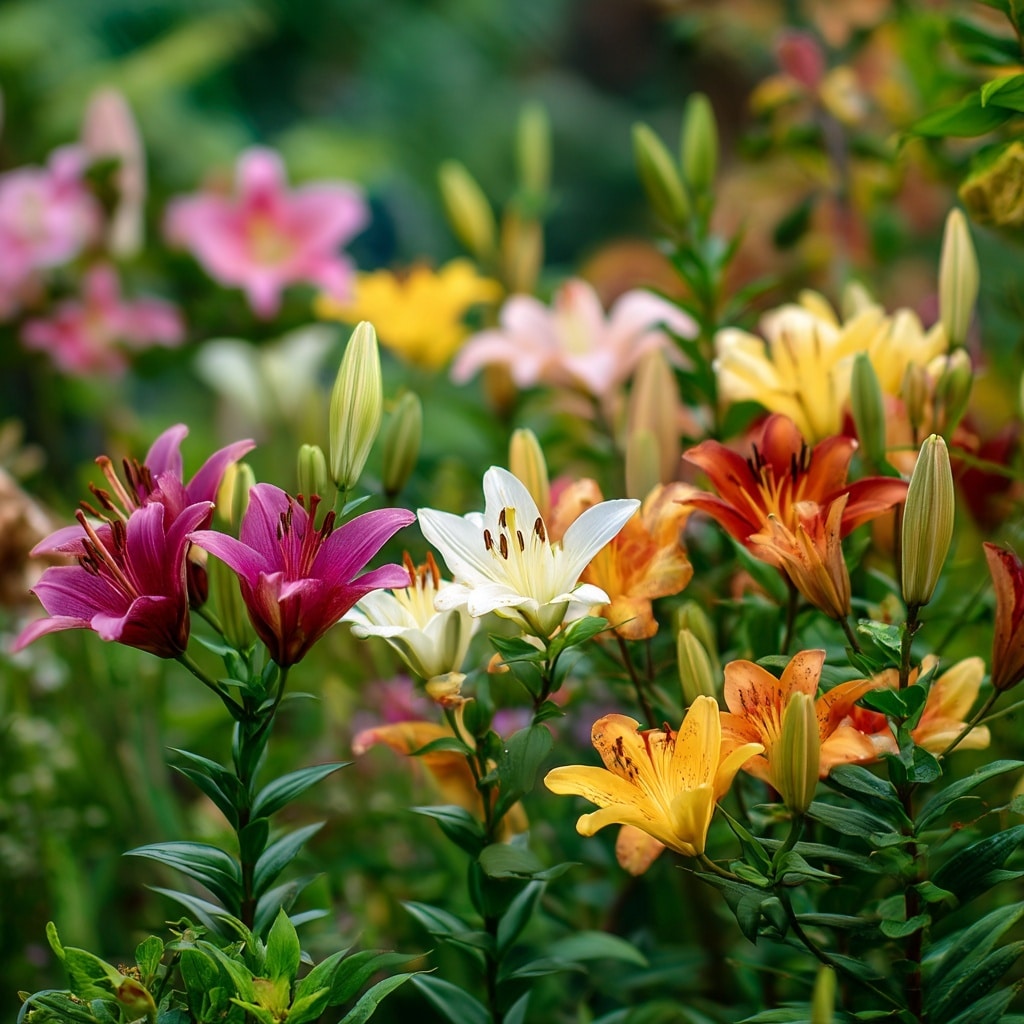Lilies are one of the most elegant and rewarding flowers you can grow in a garden. With their tall, striking stems and bold, trumpet-shaped blooms, lilies bring beauty, fragrance, and a touch of drama from early summer into fall. Whether you’re planting Asiatic hybrids for their bright, early-season colors or enjoying the heady scent of Oriental lilies later in the season, these flowers are surprisingly easy to grow when you understand their needs. In this guide, you’ll learn everything you need to know about how to grow lilies successfully—from choosing the right variety to planting, care, and long-term maintenance.
Table of Contents
About Lilies
Not all flowers with “lily” in their name are actually lilies. True lilies belong to the genus Lilium, and they grow from scaly bulbs rather than tubers or rhizomes. Flowers like daylilies, peace lilies, and canna lilies may sound similar, but they’re botanically unrelated. When growing lilies in your garden, it’s important to choose true lilies to get the classic blooms and seasonal performance they’re known for.
What makes true lilies special? Each plant sends up a strong, vertical stem topped with one or more large, six-petaled flowers. These flowers may face upward, outward, or nod downward depending on the variety. Colors range from soft pastels to deep, vivid tones, including white, yellow, orange, pink, red, and bi-color combinations. Many lilies are fragrant, especially Oriental types, while others are unscented but just as visually impressive.
Lilies are typically classified into several major types:
- Asiatic Lilies – Earliest to bloom, with upright flowers and a wide range of colors. Easy to grow and hardy, though mostly unscented.
- Oriental Lilies – Famous for their intoxicating fragrance and large, late-summer blooms. Often taller and slower-growing.
- Trumpet Lilies – Known for their narrow, tubular flowers and rich scent.
- Orienpet Lilies – A cross between Oriental and Trumpet types, offering the best of both worlds.
- Easter Lilies – Commonly sold as potted plants in spring but can be planted outdoors in warmer climates.
With thousands of cultivated varieties available, lilies offer incredible versatility in color, size, bloom time, and fragrance. By combining different types, you can have a sequence of lily blooms in your garden from late spring through early fall.
How to Plant Lilies

Getting lilies off to a strong start begins with planting them correctly. These beautiful flowers are low-maintenance once established, but their bulbs are sensitive and require the right conditions to thrive.
Choose the Right Location
Lilies need full sun—at least 6 to 8 hours of direct light daily. In too much shade, stems will stretch toward the light and may topple over. Just as important is good drainage. Bulbs sitting in wet soil are prone to rot. Avoid low spots and enrich the planting area with compost, leaf mold, or well-rotted manure to improve drainage and fertility.
When to Plant Lilies
You can plant lilies in either fall or spring, depending on your climate:
- Fall planting is ideal in most areas—about 4 weeks before the first expected frost. This allows bulbs to root before winter sets in.
- Spring planting works well in colder climates. Plant as soon as the ground is workable and all danger of frost has passed.
- Potted lilies (from nurseries or garden centers) can be planted in early summer.
⚠️ Important Tip: Lily bulbs do not go dormant. Don’t buy bulbs too far in advance—plant them soon after purchase to keep them from drying out.
How to Plant Lily Bulbs
- Loosen soil to a depth of 12–15 inches
- Plant bulbs 3 times deeper than their height (usually 4–6 inches deep)
- Place bulbs pointy side up
- Space bulbs about 8–18 inches apart, depending on the variety
- For better visual impact, group lilies in clusters of 3 to 5 bulbs rather than scattering them
- Water thoroughly after planting
- To protect against rodents, consider planting bulbs inside wire cages underground
Deep planting helps support tall stems and keeps bulbs cooler in summer, reducing stress and encouraging better blooms.
How to Care for Lilies
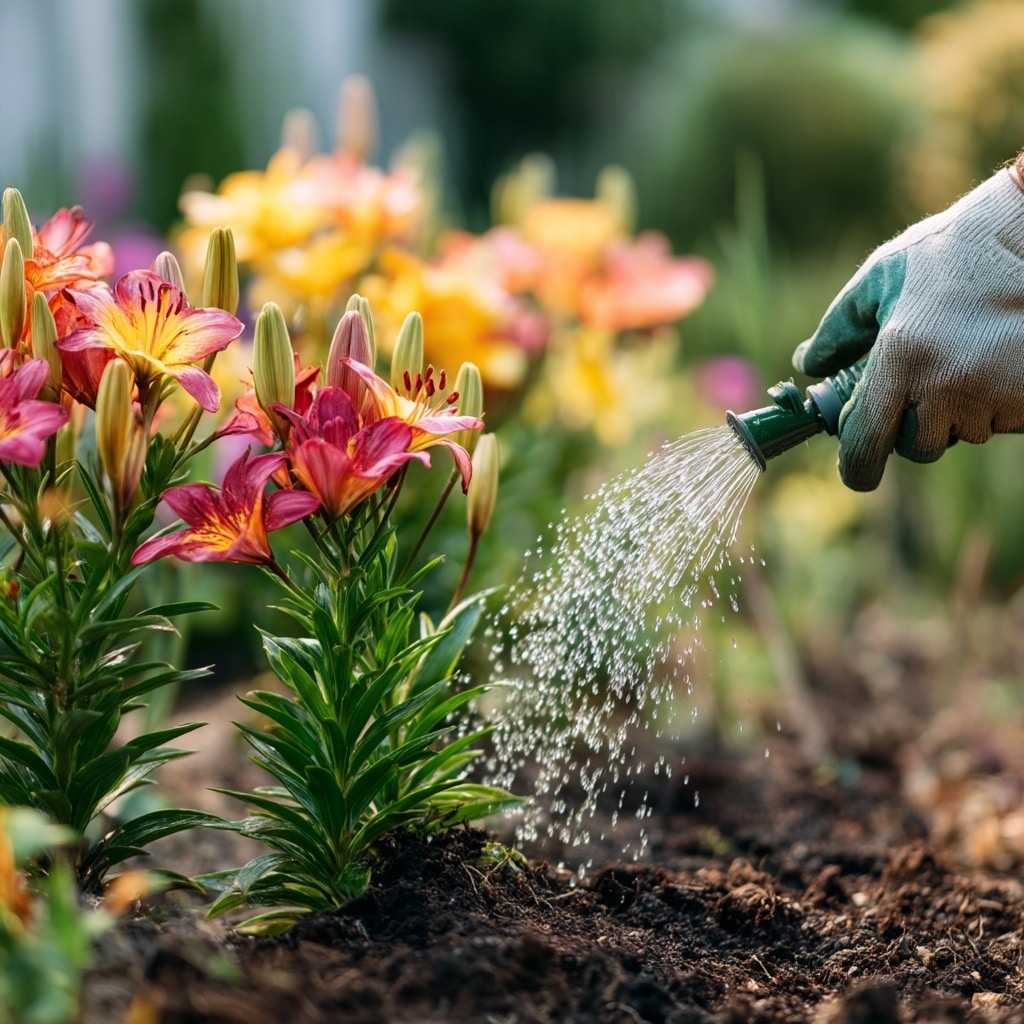
Once planted, lilies don’t demand much—but they do appreciate regular attention during the growing season to stay healthy and bloom at their best. Proper care helps bulbs stay strong and return year after year.
Watering and Mulching
Lilies like consistent moisture, especially during active growth and flowering. If your area gets less than 1 inch of rain per week, give them a good soak. However, avoid soggy soil—bulbs hate wet feet.
- Mulch with 2 inches of shredded bark, straw, or compost to keep roots cool and retain moisture.
- The mulch should stay moist but not wet, helping suppress weeds and reduce heat stress.
Feeding Your Lilies
For strong blooms, feed lilies with a high-potassium liquid fertilizer every two weeks starting at planting time and continuing for six weeks after flowering.
You can also apply:
- A thin layer of compost in early spring
- A balanced slow-release fertilizer if preferred
- Liquid seaweed or fish emulsion as a gentle organic boost
Staking and Deadheading
Tall varieties like Oriental and Trumpet lilies may need staking, especially in windy spots. Use bamboo stakes or decorative supports, and tie stems loosely.
Once flowers fade:
- Remove the spent blooms to prevent seed formation, which diverts energy from the bulb
- Cut back the flowering stalk if it looks untidy
- Do not cut green leaves—they provide nutrients to the bulb for next year’s growth
- Wait until foliage browns and dies back naturally before trimming it down in late fall
Winter Protection
In cold climates, apply 4–6 inches of mulch in late fall to insulate the soil and delay freezing. This helps roots grow longer before winter sets in. Remove the mulch gradually in spring as shoots emerge.
If your winters lack snow cover, keep the soil lightly moist and protected. In warmer regions, mulch still helps regulate soil temperature and retain moisture.
Types of Lilies
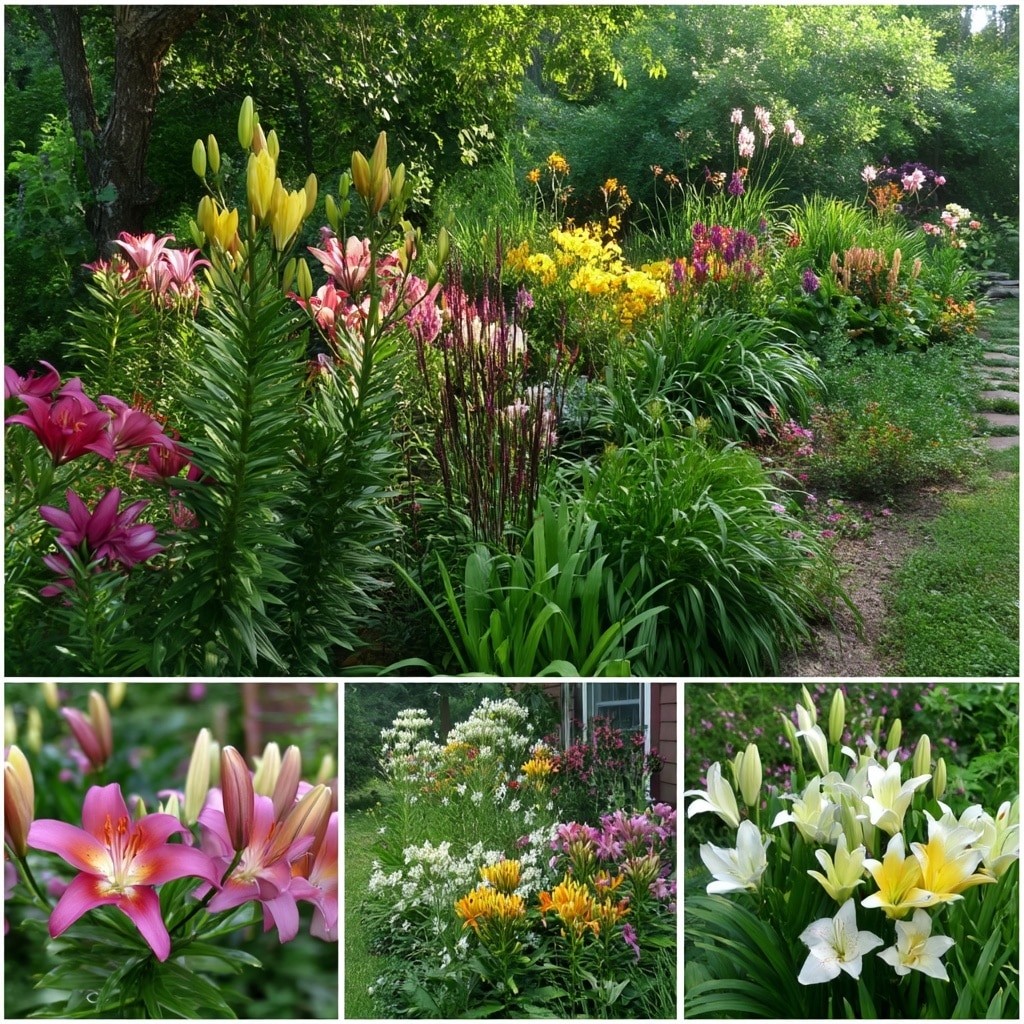
There’s a lily for every garden style, from bold and dramatic to soft and delicate. Understanding the different types of lilies helps you choose varieties that fit your climate, design, and bloom schedule. By mixing early, mid, and late-season bloomers, you can enjoy their flowers from late spring through early fall.
Asiatic Lilies – Early Bloomers
- Bloom Time: Late spring to early summer
- Height: 2 to 4 feet
- Colors: White, yellow, orange, pink, red
- Fragrance: Generally unscented
Asiatic lilies are often the first to bloom and among the easiest to grow. They’re hardy, low-maintenance, and come in a wide range of vibrant colors. Their upright blooms face the sun and make a big impact in beds or containers. Because they lack fragrance, they’re ideal for gardeners sensitive to scent.
Popular varieties:
- ‘Patricia’s Pride’ – White petals with deep purple accents
- ‘Gran Paradiso’ – Rich red blooms on tall stems
Trumpet Lilies – Mid-Season Performers
- Bloom Time: Midsummer
- Height: 3 to 6 feet
- Colors: Cream, yellow, pink, white
- Fragrance: Strong and sweet
Trumpet lilies, named for their elegant, tubular flowers, offer both beauty and perfume. They thrive in sunny spots and produce multiple blooms per stalk—sometimes up to 15! Their rich scent can fill the garden, especially in the evening.
Popular varieties:
- ‘Album’ (Regal Lily) – Classic white blooms with a golden throat
- ‘Yellow Planet’ – Extra-large buttery yellow flowers
Oriental Lilies – Late Summer Showstoppers
- Bloom Time: Mid to late summer
- Height: 2 to 6+ feet
- Colors: Pink, red, white, bi-color
- Fragrance: Intensely fragrant, especially at night
Oriental lilies are the dramatic stars of the late summer garden. With massive, ruffled blooms and unforgettable fragrance, they create a bold presence in beds or containers. These varieties prefer slightly acidic soil and good drainage.
Popular varieties:
- ‘Stargazer’ – Deep pink petals with white edges
- ‘Casa Blanca’ – Pure white, intensely fragrant
- ‘Black Beauty’ – Dark crimson with recurved petals
Orienpet Lilies – The Best of Both Worlds
Orienpets are hybrids of Oriental and Trumpet lilies. They combine the height and scent of Orientals with the durability and early bloom time of Trumpets. These are a great choice for gardeners who want reliable, tall plants with stunning flowers and fragrance.
Native and Specialty Lilies
Some lilies are native to North America and thrive in wildflower-style gardens:
- Turk’s Cap Lily (Lilium superbum) – Downward-facing, speckled orange blooms
- Canada Lily (Lilium canadense) – Nodding yellow to red flowers
- Wood Lily (Lilium philadelphicum) – Bold orange blooms, often seen in prairies
Native lilies tend to be more delicate and appreciate rich, undisturbed soil. They’re excellent for naturalized plantings or woodland edges.
Harvesting and Displaying Lilies
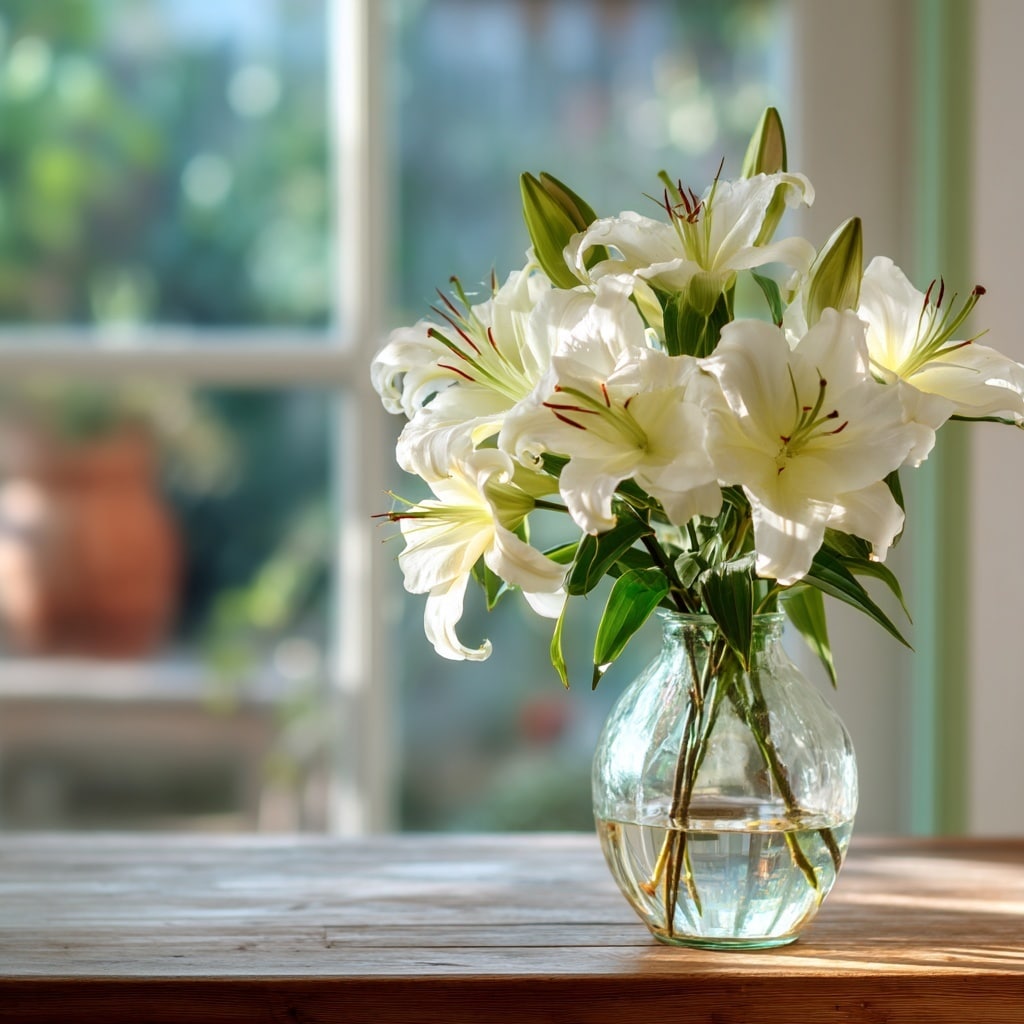
Cut lilies bring the beauty and elegance of your garden indoors. With proper harvesting and care, they can brighten up your home for up to two weeks. However, to keep plants healthy and blooms long-lasting, it’s important to cut thoughtfully.
How to Harvest Lilies for Vases
- Cut flowers early in the morning or evening when they’re well-hydrated
- Choose stems with 1–2 open blooms and several closed buds
- Use sharp, clean pruners and cut stems at a diagonal, about 12–18 inches long
- Don’t cut more than one-third of the stem—the plant needs its leaves to feed the bulb for next year
If you’re growing lilies just for cutting, consider planting them in a separate cutting garden where you can be less concerned about aesthetics.
Vase Tips for Longer-Lasting Blooms
- Immediately place cut lilies in cool water after trimming
- Remove any lower leaves that would sit below the water line to prevent rot
- To avoid pollen stains on furniture and clothing, gently snip off the stamens in the flower’s center
- Change the water every 2–3 days
- Add cut-flower food (only half the recommended amount—lilies don’t need much)
- Keep arrangements away from direct sunlight and fruit (ethylene gas can cause flowers to fade faster)
Just one stem of lilies can create a bold and fragrant display. They’re a favorite for weddings, events, and home décor thanks to their elegance and variety.
A Warning for Pet Owners
Lilies are extremely toxic to cats. Even a small amount of pollen, leaves, or water from a vase can cause severe kidney failure. If you have cats in your home, it’s safest to avoid bringing lilies indoors altogether. Dogs are less affected, but caution is still recommended.
Pests and Problems
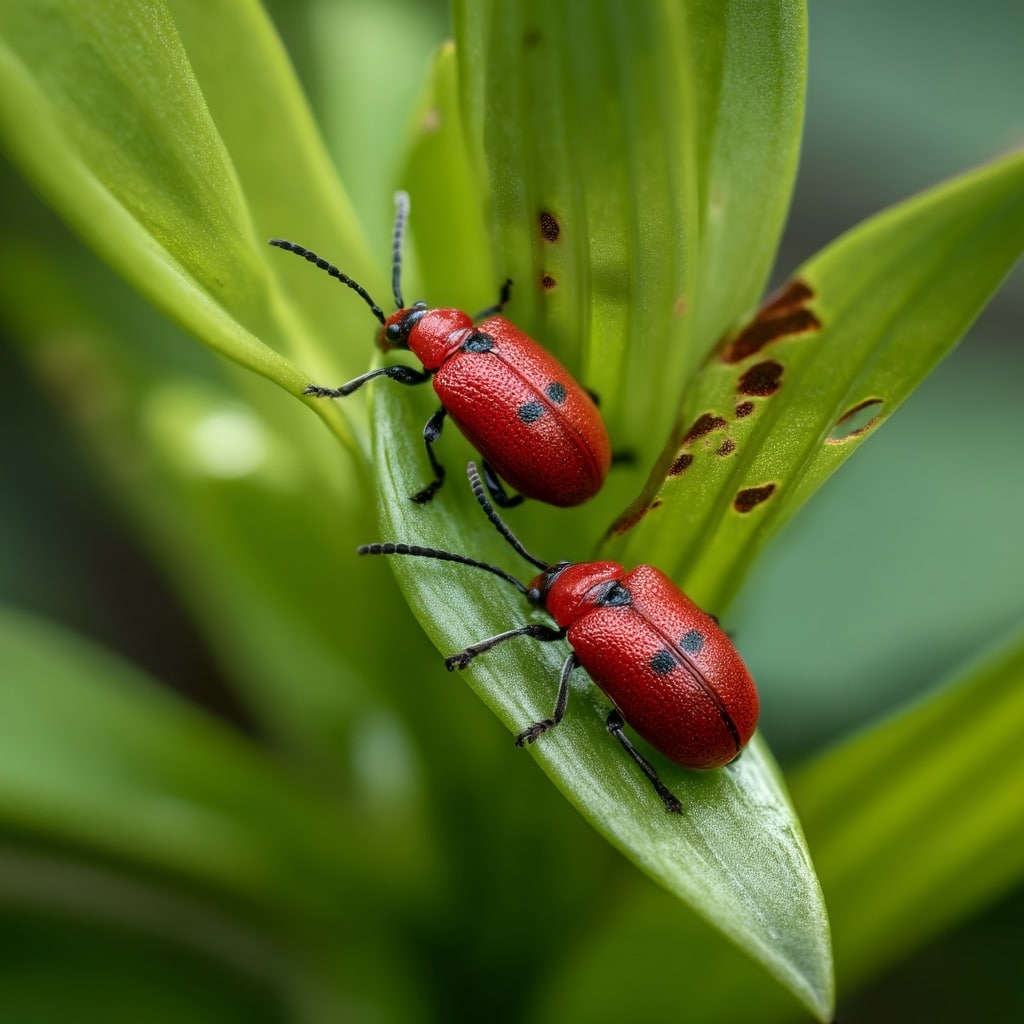
Although lilies are generally hardy and low-maintenance, they can fall victim to a few persistent pests and diseases. With proper spacing, soil care, and monitoring, you can prevent most issues before they become serious.
Common Diseases
- Gray Mold (Botrytis): This fungal disease shows up as brown spots on leaves and petals, especially in wet or humid weather.
- Solution: Ensure good air circulation, avoid overhead watering, and remove affected leaves.
- Bulb Rot: Caused by overly wet soil or poor drainage. Bulbs become mushy and won’t sprout.
- Solution: Always plant lilies in well-drained soil and avoid waterlogged areas.
- Viruses: Mosaic-like streaks or twisted foliage may signal a viral infection, often spread by aphids.
- Solution: Remove and destroy infected plants. Some cultivars are virus-tolerant, so choose wisely.
Insect Pests
- Red Lily Beetle: Bright red beetles and their larvae chew on leaves, buds, and flowers.
- Solution: Handpick beetles and crush them. Neem oil or insecticidal soap can help control larvae.
- Slugs and Snails: These pests chew on young shoots and leaves, especially in damp, shady spots.
- Solution: Use organic slug pellets, crushed eggshell barriers, or set up beer traps.
- Aphids: Small, soft-bodied insects that cluster on buds and stems, possibly transmitting viruses.
- Solution: Spray off with water or treat with insecticidal soap.
Animal Damage
- Deer, rabbits, and voles love eating lilies—sometimes down to the bulb!
- Solution: Use buried wire cages when planting bulbs to deter underground pests, and install fencing or repellents to keep larger animals away.
Healthy, well-spaced lilies with good soil and sun are your best defense. Monitor your plants regularly, especially in spring and early summer when most problems begin.
Final Tips & Wisdom
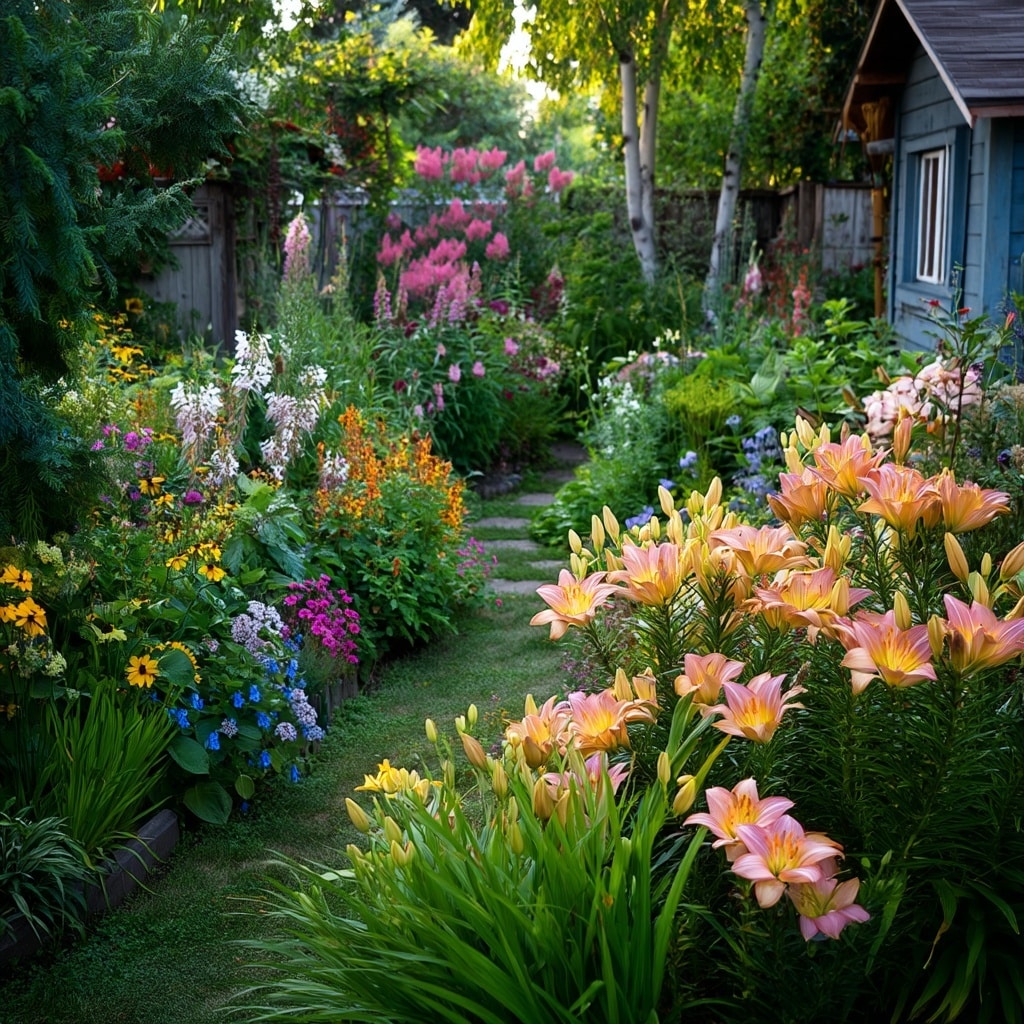
Growing lilies is both rewarding and surprisingly easy once you understand their basic needs. With a little planning and care, they can provide years of beauty in your garden or home. Here are a few extra tips to help you get the most out of your lilies:
Smart Companion Planting
Lilies pair beautifully with:
- Low-growing ground covers like hostas or creeping thyme, which help keep roots cool and retain soil moisture
- Perennials like daylilies, salvia, or alliums for layered height and extended bloom time
- Shrubs or ornamental grasses as a backdrop for taller lily varieties
Just be sure that companion plants don’t shade the lilies too much — these flowers love full sun.
Quick Facts About Lilies
- The name “lily” is used in many plant names, but only members of the Lilium genus are true lilies.
- Lilies don’t rebloom in the same season, but with proper care, they will return year after year.
- Planting a mix of Asiatic, Trumpet, and Oriental lilies ensures color from spring through late summer.
- To encourage more blooms, divide lily bulbs every 3–4 years in early spring.
Keep It Simple
If you’re just starting out, try planting a few Asiatic lilies — they’re tough, colorful, and beginner-friendly. Over time, you can add in more fragrant or specialty varieties to extend your bloom season and add interest.
With their striking blooms, ease of care, and incredible variety, lilies deserve a spot in every sunny garden.
Conclusion
Lilies are more than just pretty flowers—they’re long-lasting, reliable, and perfect for gardeners of all levels. With proper planting, thoughtful care, and smart variety selection, you can enjoy waves of colorful blooms season after season. Whether you’re looking for fragrance, cut flowers, or bold color in the garden, lilies deliver in every way.

